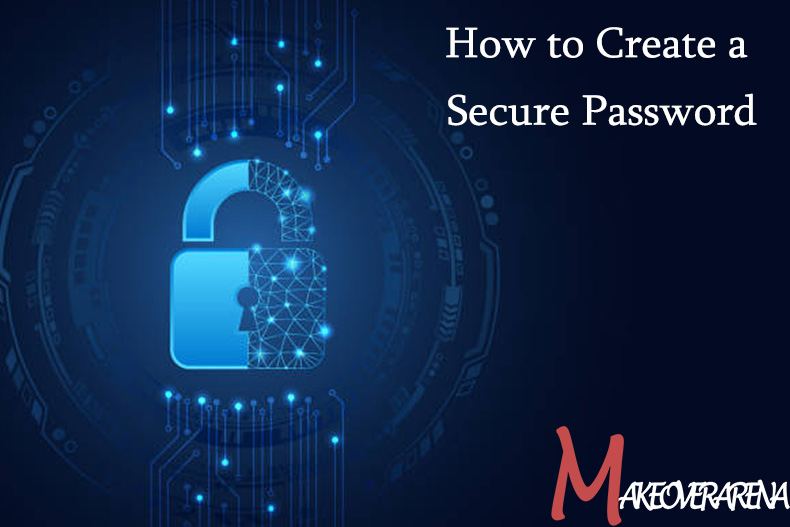The first line of defense against online threats is a password. But finding a good balance between security and retention is not simple. People use easy-to-guess passwords, which expose their private data to risk. However, do not worry! In this article, we’ll unveil some tips on how to create a secure password that prevents potential attackers and is also easily embedded in your memory.

Creating A Secure Password
In our digital age, the importance of creating a secure password cannot be overstated. The key to protecting sensitive data, from personal information to financial accounts, is a strong password. Weak passwords are relentlessly exploited by cybercriminals to gain unauthorized access, which results in irreparable harm.
An effective barrier that prevents hackers and safeguards your online identity is a strong password. Don’t undervalue the impact of a breach; take control of your security by creating a one-of-a-kind, challenging, and memorable password. Investing time in this simple yet crucial task can prevent a lot of problems and keep you calm.
How to Create a Secure Password
Let’s take a look at some tips on how you can create a strong and secure password that is easy to remember.
Create a lengthy and complex password
Making a password long and complex is a fundamental aspect of creating a secure password. Long passwords are inherently more resistant to brute-force attacks, in which hackers try every possible character combination to guess your password.
With a combination of capital and lowercase letters, numbers, and special characters, aim for a minimum of 12 characters. As these are the first things that cybercriminals look for, avoid using information that can be easily guessed, such as your name, birthdate, or common dictionary words.
Think about using a passphrase
Consider using passphrases as a way to create memorable and strong passwords rather than attempting to remember a string of random characters. A passphrase is a group of words or a sentence that have meaning for you personally but are unrelated.
The passphrase’s strength is increased by its length, which makes it much more difficult for attackers to decipher. Consider combining a line from your favorite book or movie with other unrelated words to create a passphrase that is specific to you.
Mnemonic Techniques for Quick Password Remembering
Even with passphrases, it can be difficult to remember many different passwords. Create acronyms based on your interests or hobbies to use as your passphrase, and connect them to vivid mental images. You can easily remember the passphrase this way whenever you need to without sacrificing security.
Personalize for Each Account
Even though using a passphrase is a great way to improve memorability, it’s still important to make each account’s password unique. If one of your accounts is compromised, all of your accounts that use the same password are at risk.
Add a related word or abbreviation to your passphrase for each account to solve this problem. If your passphrase is, for instance, “AboveTheSky,” you could modify it to be “AboveTheSky_FB” for your Facebook account.
Avoid Common Password mistakes
To keep your passwords as secure as possible, you should avoid a few common password practices. Avoid using easily accessible personal information like your name, the names of your family members, or the name of your pet.
Additionally, stay away from using repetitive or sequential characters like “123456”. These customs are well known to cybercriminals, who will take advantage of them first when trying to crack passwords.
Update Your Passwords Frequently
No matter how secure and memorable your password is, it must be updated on a regular basis. The risk of unauthorized access is decreased by frequently changing your passwords, especially if you suspect any security breaches. Make it a routine to change your passwords every few months, or even more often for important accounts like email and online banking.
Conclusion
For the sake of protecting your online accounts and personal information, you must create a secure password. You can greatly improve the security of your passwords by creating lengthy and complex passwords, using passphrases, and customizing them for each account. A strong defense against cyber threats is ensured by using mnemonic devices for quick recall and avoiding common pitfalls. Keep in mind to update your passwords frequently and avoid using information that could be guessed.
Frequently Asked Questions
What are passphrases? Why are passphrases suggested for making strong passwords?
Passphrases are longer and more memorable combinations of words or sentences that hold personal significance for you. Because they are simpler to remember than random character strings and provide greater security against hacking attempts, they are advised for use when creating strong passwords.
Is using the same password across various accounts secure?
Using the same password across different accounts is not secure. All of your other accounts are exposed if one is compromised. Use different passwords for each account to increase security, or modify a passphrase for various platforms.
What other security measures can I use to safeguard my accounts?
Adding two-factor authentication (2FA) to your security settings is a good idea. To access your accounts, a second form of verification is necessary, such as a special code sent to your phone. Password manager applications are also helpful for securely storing and managing your passwords.
Can my password be recovered if I forget it?
Even though some platforms provide password recovery options, it can be difficult to recover a lost password. As a result, it’s important to maintain the security of your passwords and have backup recovery procedures in place, such as giving a backup email address or phone number for identification.
CHECK THESE OUT:
- When is Valentine’s Day 2023
- Change Password on Facebook: How to Change Password on Facebook | Facebook Password Change
- How to Keep Your Facebook Account Secure
- Jobs On Facebook: Facebook Jobs Hiring Near Me | Facebook Jobs Page
- How to Ensure your Passwords are Secure – Password Safety and Security
- Secured Credit Card – List of Some of the Best Secured Credit Cards



